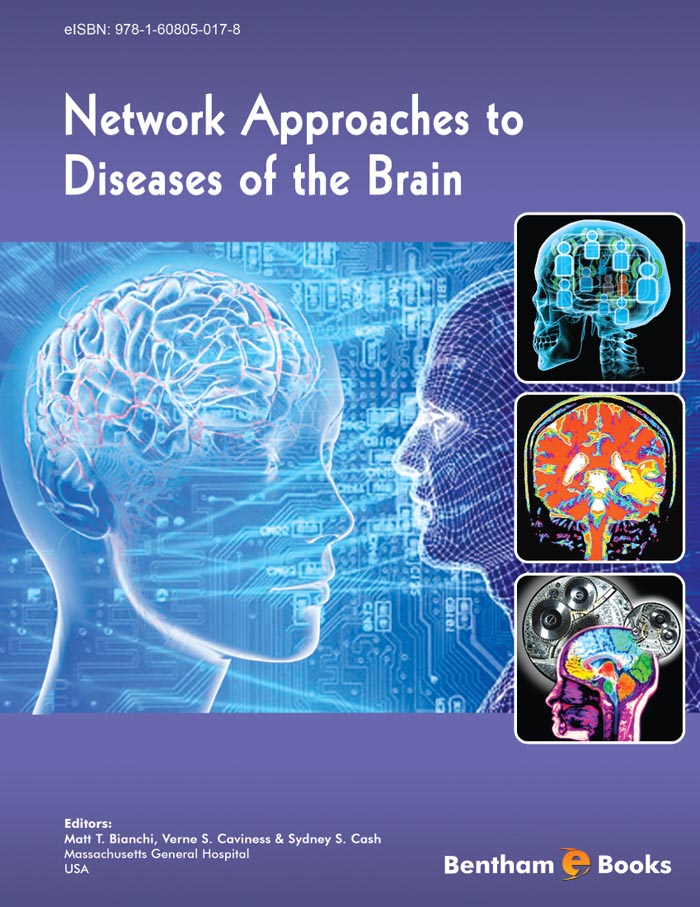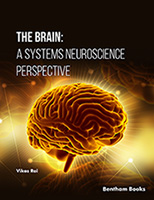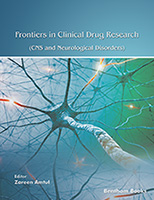Is it possible to make a walk crossing each of the seven bridges of the Pregal River in Konigsberg only once? This does not sound very much like the question modern neurologists are likely to ask when dealing with their patients and the complexities of neurological disease. Surprisingly, however, this book by Drs. Bianchi, Caviness, and Cash will show how this type of question has recently become very relevant for understanding how complex brain networks develop and function, and how this enchanted loom breaks down in neuropsychiatric disease. The famous problem of the seven bridges of Konigsberg was solved by the brilliant mathematician Leonhard Euler. To do this he had to invent a completely new branch of mathematics: graph theory. Graph theory deals with complex networks by reducing them to their bare essentials: collections of network nodes or ‘vertices’ and their interconnections called ‘edges’. How could this esoteric piece of mathematics teach us something useful about the brain and its disorders?
The Hungarian writer Frigyes Karinthi may have been one of the first to hit upon some unexpected properties of large-scale networks. In a short story called Chains, one of the characters wonders whether every human being might be connected by at most six intermediate persons. This phenomenon is the basis of popular games such as the Kevin Bacon game, where one has to connect an arbitrarily chosen actor to Bacon by a series of movies in which the two actors played together. Another variant of the game is the Erdos number: this indicates how close you are to the famous and eccentric mathematician using a chain of co-authorships. The first to study this phenomenon of small distances in social networks more scientifically was a psychologist from Harvard: Stanley Milgram. With his famous letter experiment he showed that indeed distances between arbitrary persons in social networks are surprisingly small, on average close to six intermediate persons. This gave a scientific basis to the notion of six degrees of separation, but it was completely unclear how such a property of social networks could arise. We should not forget an average person has only about 150 acquaintances (Dunbar’s number), and there are close to billion people in the world.
The problem was solved by Duncan Watts and Steve Strogatz in a brilliant Letter to Nature published in 1998. Using graph theory they proposed a network model that could span the whole range from fully ordered networks (each node connected to a fixed number of neighbors) to completely random networks. Networks in the intermediate regime, so-called ‘small-world’ networks, were characterized by high clustering as well as short distances between any pair of nodes. The discovery of the ‘small-world’ model, and the ‘scale-free’ networks by Barabasi and Albert one year later, revolutionized the study of complex networks. It has now been shown that high clustering, short path lengths, and scale-free properties are the typical properties of a wide range of complex networks found in nature, ranging from metabolic and gene networks to transportation systems and social networks, providing a scientific basis for Karinthi’s intuition and Milgram’s observations.
What about the brain? Neuroscientist have seized upon the new possibilities offered by modern network science to study the anatomical and functional organization of the brain, ranging form C. elegans to cats, macaques and humans. We now know that brains of all sizes and at various levels show the typical signature of small-world networks: they are highly clustered, and have very short path lengths. In addition, they are characterized by highly connected nodes called hubs, which hang together in the form of a ‘connectivity backbone’. Furthermore, complex brain networks have a delicate hierarchical structure, with modules and sub-modules. These topological features are closely related to brain function. For instance, very recently it has been shown that the path length of anatomical and functional brain networks, that is, the number of steps it takes to travel from one region of the brain to any other region, is closely related to intelligence. How our brains are wired up is strongly predictive of how smart we are.
If modern network theory is so promising for gaining a better understanding of the structure and function of complex brain networks, what does this imply for neurology and psychiatry? Can we understand neural diseases in terms of various scenarios for network breakdown? An increasing number of studies have addressed this question in recent years. Although it is too soon to make up the balance, some interesting patterns can be seen to emerge. Many degenerative disorders are characterized by a breakdown of the normal, optimal small-world structure, resulting in a more random topology of brain networks. In Alzheimer’s disease, there are indications that the disease process specifically targets the hubs of the network, which are also associated with the highest levels of amyloid deposition. In epilepsy, there is increasing evidence that certain network topologies might underlie abnormal low thresholds for network synchronization and seizure spread.
Drs. Bianchi, Caviness, and Cash have attempted to give an overview of this exciting field of network studies in neurology and psychiatry. For anyone who is not familiar with graph theory, the basic concepts are explained in various chapters, avoiding the mathematical details that would distract from the overall understanding. This book gives and excellent overview of the state of the art of network theory and oscillatory synchronization, both in relation to normal brain development, sleep and cognition, as well as with respect to a range of neurological disorders, ranging from degenerative disease to epilepsy. This book is a ‘must’ for any scientist and clinician involved with network studies. Neurologists, neurosurgeons, psychiatrists, psychologists and neuroscientists who are not familiar with these new developments will find that this book is an exciting as well as accessible introduction. Hopefully, many will get ‘hooked up’, and turn their attention to a complex network perspective of the brain.
The Harvard psychologist Stanley Milgram was one of the pioneers of the ‘small-world’ idea. Now, this book edited by neurologists and neuroscientists of Harvard and Massachusetts General Hospital continues this Boston tradition by pointing out the importance of the ‘small-world’ in our brains. Hopefully, one day, we will be able to prove network theorems about the brain, as Euler did for the seven bridges of Konigsberg.









